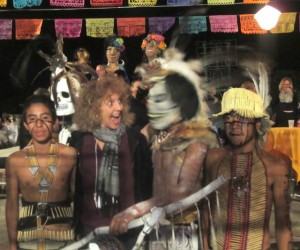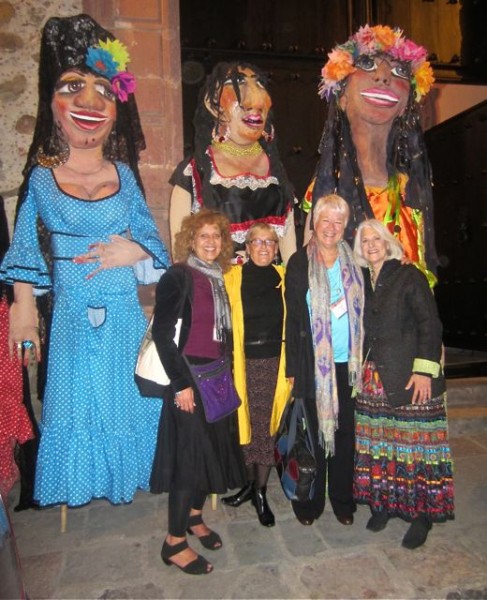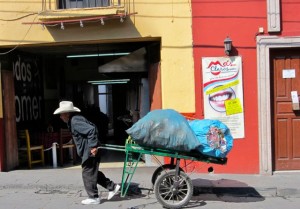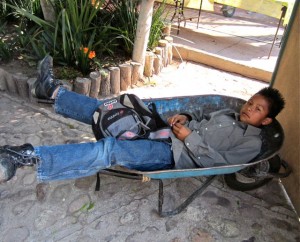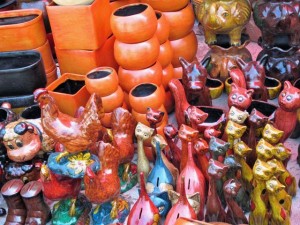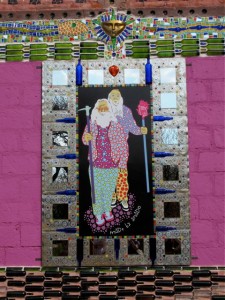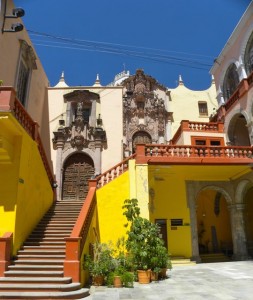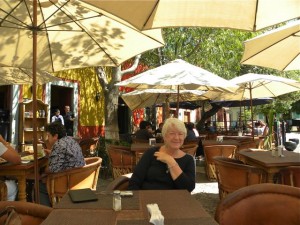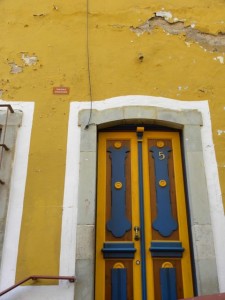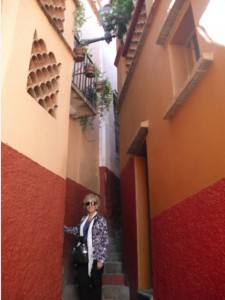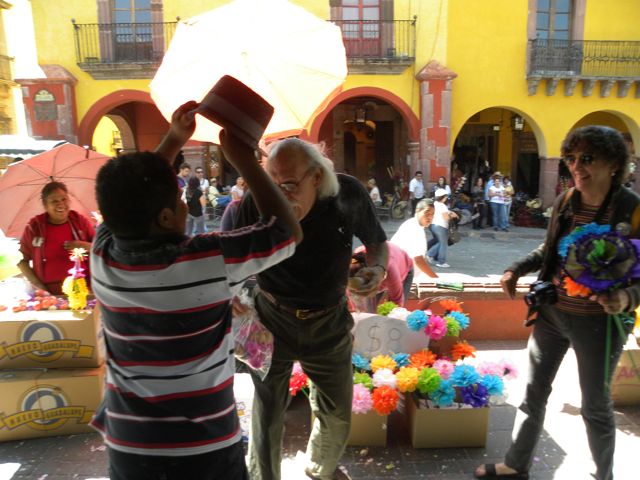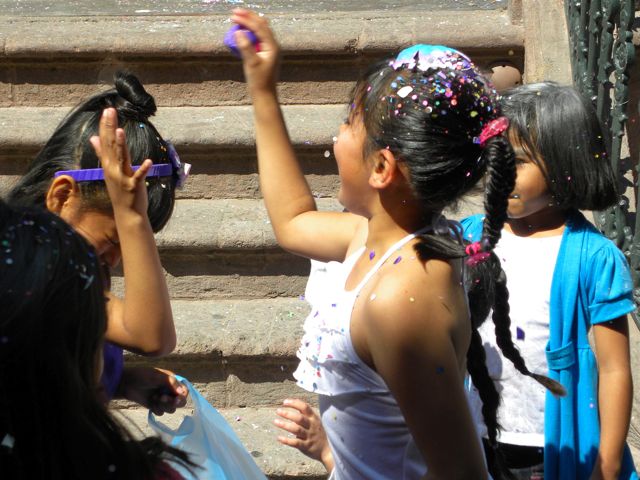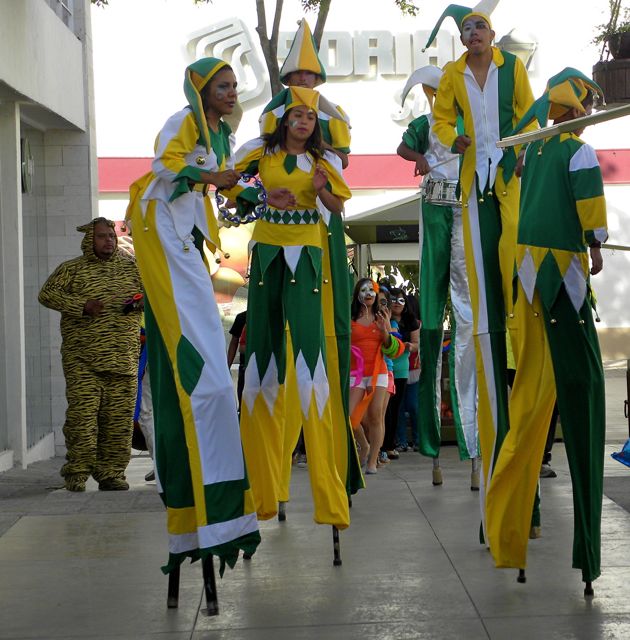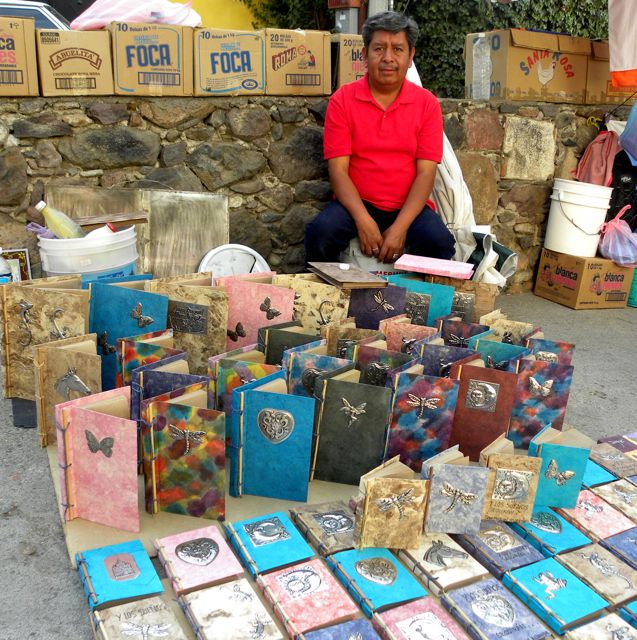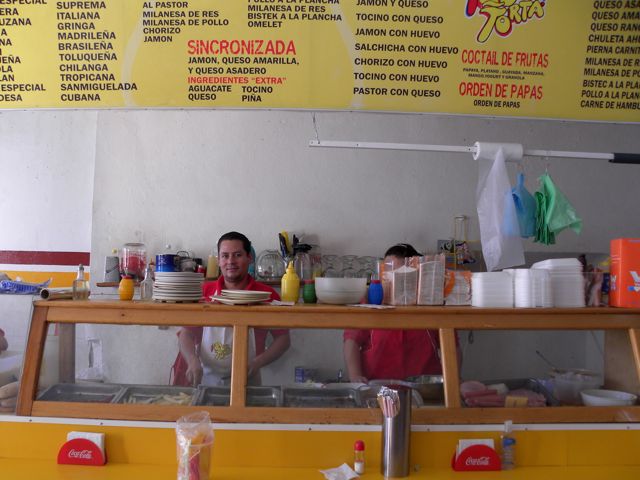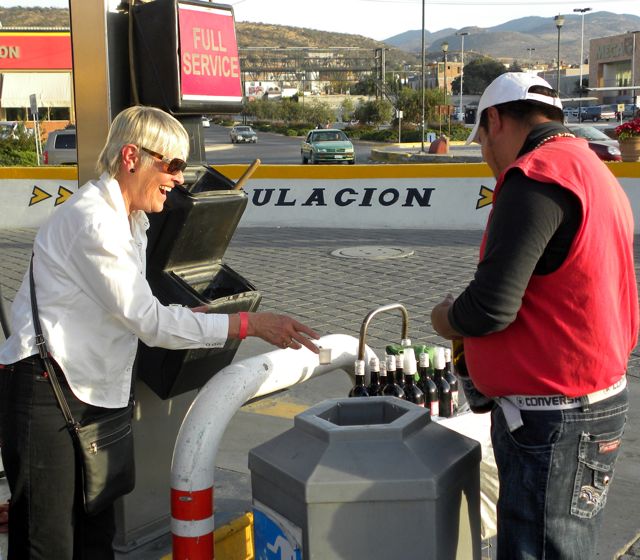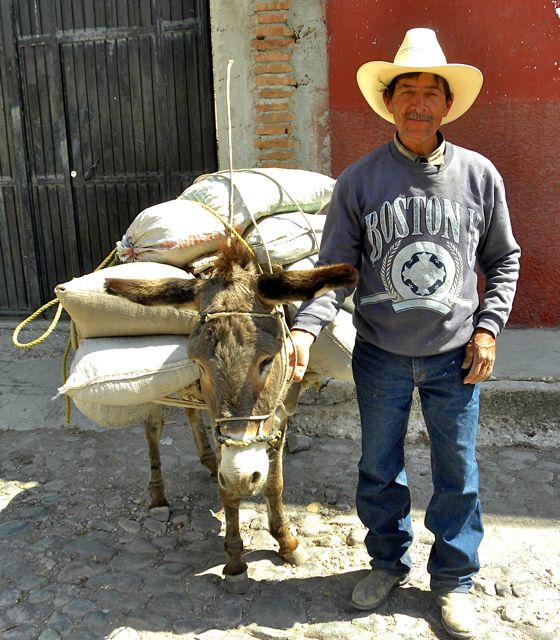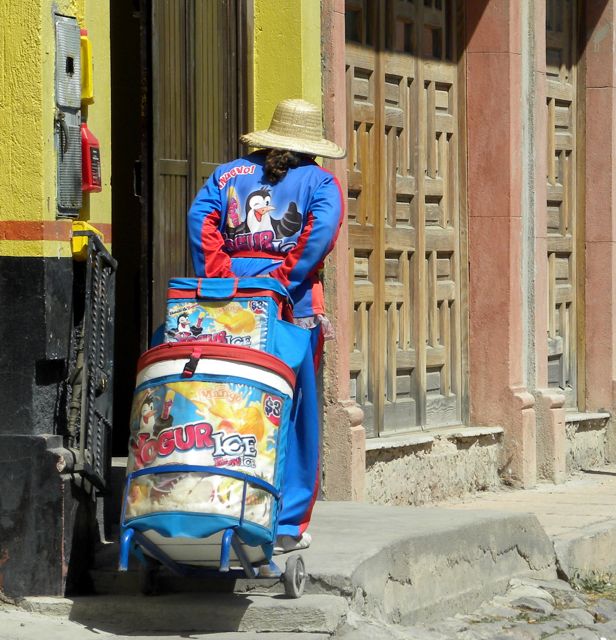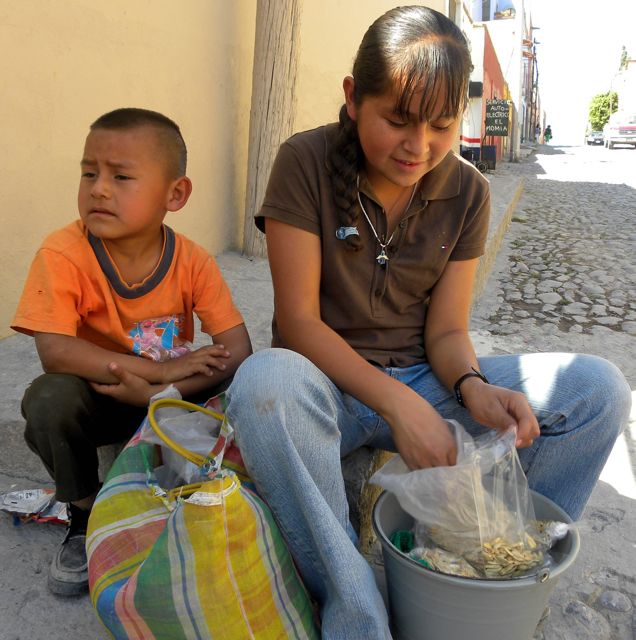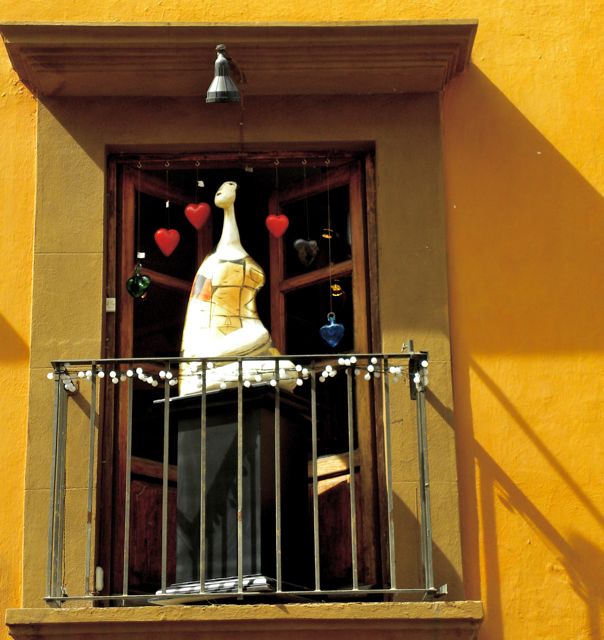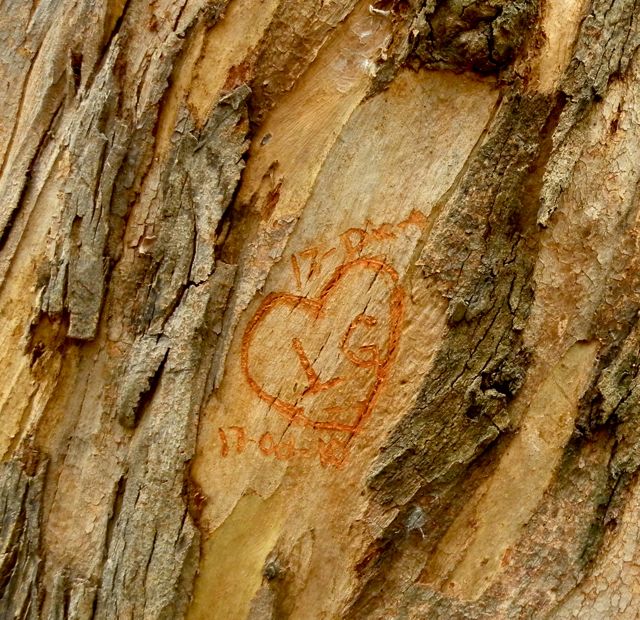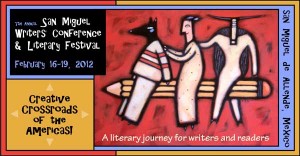 Last year, I fell into it at the last minute. This year I came prepared to deliver, at San Miguel Writers’ Conference, a 90-minute workshop on “Self-Publishing Success.” My overview of the rapidly-changing world of print on demand (POD), eBooks and online marketing was well-received by 40 gracious and eager learners.
Last year, I fell into it at the last minute. This year I came prepared to deliver, at San Miguel Writers’ Conference, a 90-minute workshop on “Self-Publishing Success.” My overview of the rapidly-changing world of print on demand (POD), eBooks and online marketing was well-received by 40 gracious and eager learners.
I shared what I discovered in publishing”Leonardo’s Revenge and Other Stories” – in the week between Christmas and New Years Day, without spending a penny – my encouragement to get it done, and my suggestions of where to spend money on professional help: editing, cover design and a well-conceived marketing plan so as to stand out among the three-million-plus eBooks expected to be published in 2012. I also uploaded a number of resources to this site for those interested in self-publishing (feel free to pass along!).
By all accounts, the 7th Annual Conference was the best yet! Bigger, better and exceptionally well organized, the four jammed-packed days in mid-February provided authors and readers a plethora of workshops, classes, panel discussions, readings and lectures. For me, the highlight was Margaret Atwood’s keynote address, “Writing and Hope,” attended by more than 800 people, both residents and visitors to San Miguel.

Margaret Atwood, a Canadian National Treasure and author of more than 40 books of fiction, poetry, and critical essays, spoke of hope as “a human constant and a literary concept. As writers, we cannot possibly succeed unless we have hope… hope we’ll finish a book, find a publisher, and the publisher last long enough for the book to come out; and hope someone will buy it, read it, and understand and/or like it. That’s a lot of hope!”
With grace and wit, she traced her history as a woman author in light of social changes over the past five decades, starting with “Edible Women” published in 1969: “In those days, I was often asked, ‘Do you hate men?’ to which I’d responded, ‘Which ones?’ When vacuous reporters asked, ‘Is your hair really like that or do you get it done?’ I’d say, ‘If I were going to get it done, would I do this?'” (Sharing a similar relationship to my unruly hair, I had to laugh!)
In a beautifully balanced discourse of light and darkness, Ms. Atwood raised the question of hope regarding human rights and environmental issues – major issues of our time and her passions – noting we rightly fear for the economy, the planet, our children, and the civil rights we once took for granted. She concluded, “We are readers and writers embedded in time.”
In regard to her dystopian books, that she refers to as “speculative fiction,” “”Handmaiden’s Tale”, “Oryx and Crake” and “Year of the Flood”, Atwood addressed possible, scary futures such as “theocracy, and contraception in all its forms” – who can have children, who are denied them, who must have them, who gets to steal the children of others, who creates canon fodder – adding, “I did not intend [my books] to function as a blueprint for Republicans.”
In Atwood’s insightful world, “Writing is the coding of human voice into symbols. Reading is the decoding of symbols (like music). Readers are playing your symbols; it’s not passive. Human voice and language – it is us and we are it.” But, there is always the dark side: “Those in power control language. They think, ‘if it can’t be said, then it can’t be thought, and it can be made to disappear.'” She asked us to consider examples, such as recent laws of unbridled snooping, and labeling environmentalists “terrorists” when, in fact, “it’s all about the oil!” As soon as those emphatic words were out of her mouth, a boom of thunder shook the conference hall. Without missing a beat, Ms. Atwood calmly proclaimed, “I love punctuation!”
Among many global concerns and challenges, she spoke of the disappearance and murder of journalists “brave enough to write about drug violence. Mexico deserves better! Writers must be free to use their human voices without being martyred.” She ended her beautifully-crafted speech with a final insight into hope: “Hope imagines things can be better than they are.”
The next day, passing Ms. Atwood on the grounds of the Hotel Real de Minas, where the conference was held, I thanked her, saying, “That was the best keynote speech I’ve ever heard.” To which she replied, eyes twinkling, “If that’s the case, we’re in trouble!” We both laughed and moved on. I felt hope… hope that I might realize my aspiration to be such an elegant, lively, passionate and brilliant writer and speaker as Margaret Atwood.
With another successful event behind them, Director Susan Page and the executive committee are already planning for 2013. I have submitted my proposal to again present on self-publishing and marketing, and hope to be invited back to this extraordinarily fun and inspiring conference.
